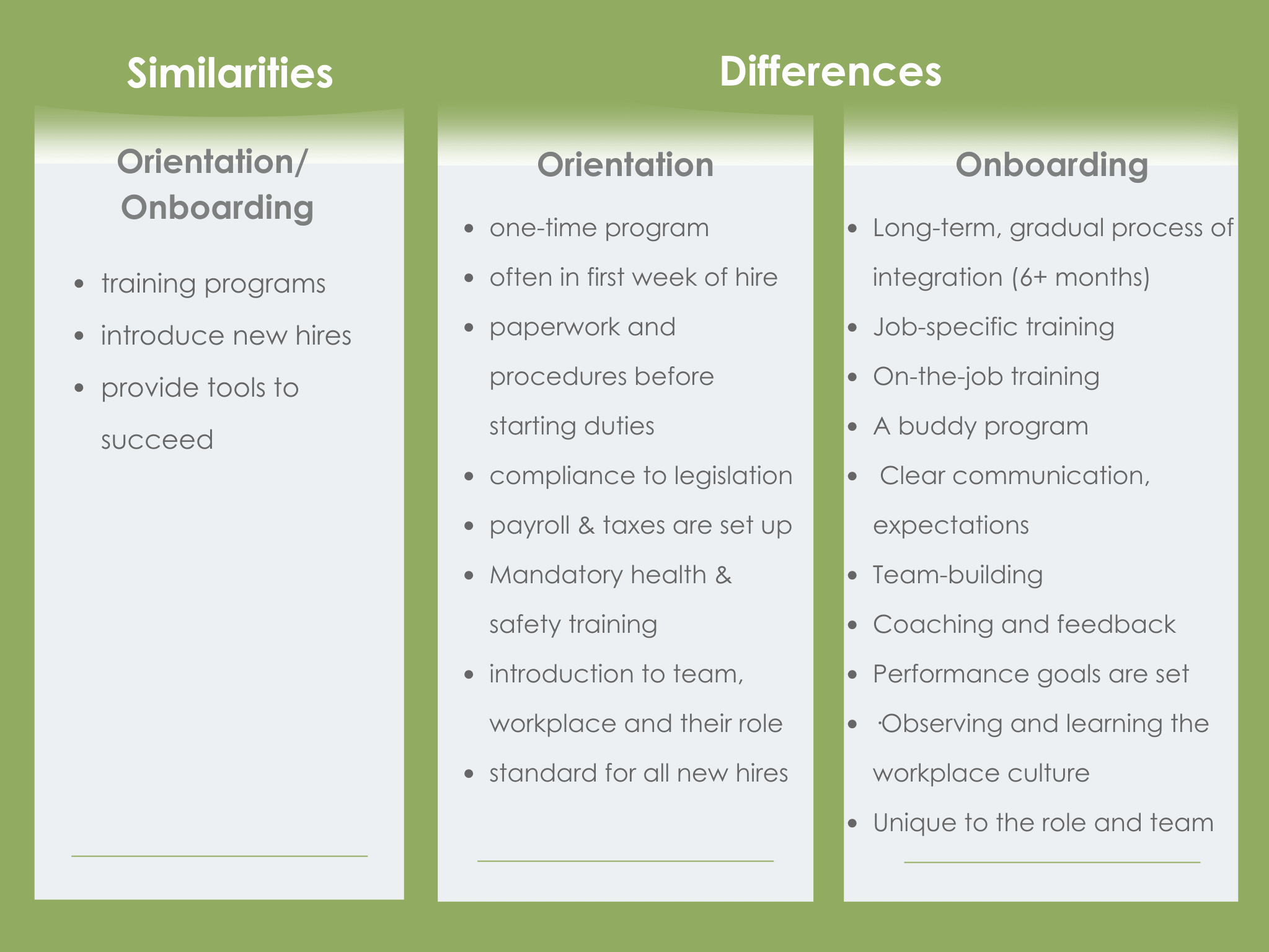
Orientation versus Onboarding: Know the Difference and Retain your Talent
Onboarding and orientation are two separate terms that are often used interchangeably. While they share some similarities, they are quite different. They are similar because they are both training programs designed to introduce new hires to the organization and provide them with the tools to succeed in their new roles. However, they differ because orientation is a one-time training that is often completed in the employees first week, while onboarding is a long-term and gradual process of integration into a company, which often takes six months or longer to complete.
Orientation:
Completing orientation with a new employee is the first part of onboarding. It’s the paperwork and procedures that need to be taken care of before employees can officially start their duties. This is also an important step in maintaining compliance with employment legislation. During orientation, employees will provide their personal information so they can be paid and taxed appropriately. They will also participate in mandatory health and safety training that will prepare them to be safe at work. They are introduced to the team, the workplace, and their role in it.
Onboarding:
In contrast, onboarding is an extension of orientation with training and support for new employees to be successful in their role. This is where more job-specific training takes place. A good onboarding program should include a buddy system, clear communication around expectations, team-building, on-the-job training, coaching, constructive feedback, and setting performance goals. New workers are learning the workplace culture, norms, and the values of the organization through observing others, the symbols, and language used around them.
While orientation is primarily legislated and tactical, the onboarding process is left to the employer to develop and customize to their organization and the position. The onboarding process will be unique to each role and can include quite a bit of participation from supervisors and team members. Spending this much time on new employees is a huge investment! The more you invest in your employee onboarding program, the more confident your new hires will be, leading to higher productivity and stronger job performance.
Tips for a Successful Onboarding:
We have all been a new employee at some point, and remember what that feels like – not knowing where things are stored or who to ask for help can cause unnecessary stress to a new worker. This is why we recommend introducing a "buddy system". Assign a team member (who is not the new employee’s boss!) to be their go-to person to ask all those types of questions. Remember to introduce the employees to immediate team members and those in other departments that they will be working with, take them on site tours, and make time for questions. This, paired with clear expectations and easily accessible resources will ensure your employees are fully prepared to take on their new role. Orientation is just the first part. Spending the time to onboard your employees will save money, increase productivity, build trust, and improve retention rates. After all, retention is usually less of a drain on resources than turnover, and employees who are properly onboarded and confident in their roles tend to stick around.
Images


